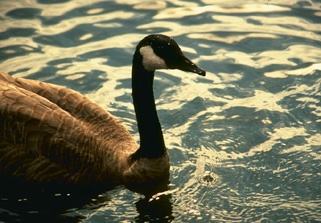Click on image for full size
Courtesy of Corel Corporation
A Hairy Situation!
News story originally written on April 29, 1998
Stories of 'ordinary' (often unexpecting) people who make 'extraordinary' discoveries have always intrigued me. So when I ran across this story, I knew I had to report this rather hairy incident!Oil spills in the last two decades have received an awful lot of news coverage - partly because of the devastation caused to the environment, partly because there didn't seem to be any good/quick/cheap way of fixing the damage that had been done. I think many of you will remember seeing geese, ducks and otters, soaked with black crude oil, limply hanging in the net of a spill rescue member.
An inspiration of Phillip McCrory of Alabama may bring about new recovery techniques for oil spilled in water. McCrory was watching television coverage of 1989's oil spill in Alaska's Prince William Sound. "I saw an otter being rescued whose fur was saturated with oil," said McCrory. "I thought, if animal fur can trap and hold spilled oil, why can't human hair?" You see, McCrory is a hairdresser in Alabama.
McCrory starting experimenting at home. Using his son's wading pool and a pair of his wife's panty hose stuffed with human hair, he went to work creating (and cleaning up!) his own mini oil spill. "When I pulled the legs of the hosiery ring together, the oil had adsorbed onto the hair inside of it," McCrory said. "I couldn't see a trace of oil in the water." McCrory found that human hair adsorbs oil. Adsorbtion means that the oil gathers in layers on the hair's surface. By squeezing the hair bundle, the oil can be recovered and reused as fuel.
After a lot more patent research McCrory realized, "I'd found a commercial use for what's really a waste product. Tons of human hair are cut every day and tossed into landfills."
McCrory lives near Marshall, Alabama, home of NASA's Center
Technology Transfer Office. After meeting with NASA, the Center has agreed to take on controlled laboratory testing. All initial tests have been successful - McCrory's method is quick and certainly cheaper than current cleanup methods.















